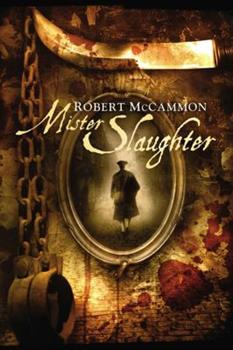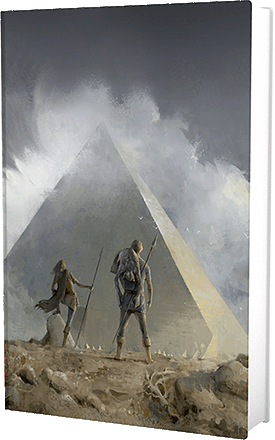Recently I read an interview with musician Paul Weller (The Jam, The Style Council, 16 solo albums), who said he’s not sure he’ll write another album after his last one. The way people listen to albums has changed, he said, all due to streaming. This made me reflect upon my approaches to albums.
I’ve bought music since the early 1980s. Back then you bought cassette tapes or vinyl. I didn’t have a record player, so I listened to tapes on either my Sony Walkman or a portable stereo. I still own many of those cassettes. I did buy a record player in 1986, and a few vinyl records, right before the Compact Disc (CD) wave took over and made both cassettes and vinyl virtually obsolete. People still bought those formats, but the world shifted to CD at some point around the 1980/1990 s crossover. With cassettes and vinyl you couldn’t really skip tracks. Sure, you could lift the needle and try to aim for a track, but more often that not you sat through one side, flipped the record, and sat through another, just to find the one or two songs on the album you liked. Cassette players let you “fast-forward” through songs, and some newer ones would even advance to the next track. But otherwise, you were stuck. Usually, you’d get a couple of great tracks on an album, maybe a few more, but the rest were fillers, crappy songs that felt slapped together because the band had to have 10 tracks for an album, and albums were usually produced quickly.
If that was a great way to listen to albums, Mr. Weller, then that’s not how I remember it.
Unlike with CDs and vinyl, I bought a ton of CDs. I grimaced each time, as they cost a lot more. Still, I didn’t have to mess with tape, nor (for the most past) scratched up records. I could play them in a car, at first with a portable player, and then built-in (no longer, it seems). CDs were the future.
Then came the computer and mp3, Napster and sharing, piracy, the Apple store and other online ventures, from unsavory to professional, from ephemeral (Tidal) to lasting. You could rip CDs onto your computer, free tracks from albums and create long play lists. Sure, mix tapes existed before the computer; I made a few myself. It was a way to extract exceptional songs from albums onto your own “best of” album at first. On a 90-minute tape with two side you’d get almost two full albums worth of songs. Creativity was up to you, and in my case I included a host of songs from the 1980s onto my mix tapes. And played them to death. But I also listened to albums. I lived with the bad tracks, just to hear music from my favorite artists.
The digitization of music spelled doom for many bands, it was said. People could (and did) share music freely, without compensation to the artist, and on a grand scale. I moved lots of my music to my computer. I listen to music while I work, and with iTunes was able to create playlists, or listen to songs or artists, or albums. I had thousands of tracks to choose from, as if I ran my own radio station.
Then came streaming. A cheap, new way to consume music – you no longer had to own it. You were chained to the tastes of a music station. You could discover music close to what you already liked, or play the same song over and over and over.
Streaming doesn’t compensate artists well. The owners of the service become billionaires, but the artists? Not so much. Then again, you buy and album once, and listen to it many times. I don’t know the economics of streaming, but an issue that seems to get raised a lot is that with streaming, few people buy (or download) their music. People cluster around famous artists, and maybe they make money (maybe not), but the lesser artists make pennies, even from thousands of streams. Where does the music go, one wonders, when the founder of services like Spotify make millions or billions.
Perhaps I stream music differently, and I do admit that I use a streaming service during most of the day, but not always. I also still buy music, in the form of CDs, vinyl, and downloadable product. I mainly buy albums though – probably 99.99% of the time. When it comes to streaming, my listening approaches are in three ways:
First, I’ll find an album and listen to that, often saving it as a playlist, and playing it multiple times, all the way through.
Second, if there’s a song I play again and again, it goes into a playlist, and this get modified over time.
Third, I let the algorithm discover new tracks, new artists. From this, I sometimes check out albums and move to the first option.
All in all, I don’t know if streaming has changed me that much. Maybe other people have ruined Mr. Weller’s day. I do own several Style Council and Weller albums, whether on cassette, vinyl, CD, or as purely downloaded tracks. But, I haven’t bought all his stuff, especially of late. Part of that’s due to the death of record stores, even record stores within book stores (I’m looking at you, Borders, and partly Barnes & Noble). When the world went digital, discovering albums by musicians you knew wasn’t always as easy, or fun. It got cheaper, sure, as albums tend to cost around $10-12, vs. $18-20. With streaming, it’s even cheaper. You pay $x a month, and listen to as much as you want. Still, I guess I should check out more of Mr. Weller’s works. Maybe that makes no difference to him, but maybe it will let me find albums I like, much like those earlier works that I own.
I actually did buy some new music this week, albums by Beachy Head, Muzz, and Lisa Gerrard & Jules Maxwell. I have others on my list to buy. I also bought one individual song, a cover of New Order‘s “Leave Me Alone” by Thurston Moore. I’m a huge fan of early New Order, though the band’s never been the same since Peter Hook left. Streaming makes me a little lazy sometimes. I don’t alway buy stuff I hear online, although I’ll admit I also stream stuff that I already own. I guess, even though the artists make next to nothing, it’s a way to support them, in my own way, rather than buying their CD once and playing it dozens of times. Still, some of that streaming consumption is albums, from the first track to the last; I just no longer need to pause to flip the record, or eject the tape and put it back the right way to listen to the next side.
The funny thing, without streaming services, I never would have stumbled across Muzz, despite being a huge Interpol fan. As for Beachy Head, I read about them on Twitter, and Lisa Gerrard, from some music web site. Great music is still out there, discoverable. In my case, streaming hasn’t altered my perception of albums — most of them have a few great tracks, some good ones, and the rest can be ignored. At least with digital music you can skip the crappy ones. Still, there’s no accounting for taste, and what I see as crappy others might have as their favorite.
So, Mr. Weller, make some more music, or not. I’ll give your newer stuff a listen. Maybe it will be to my taste, maybe it won’t. You’re still a great artist.


